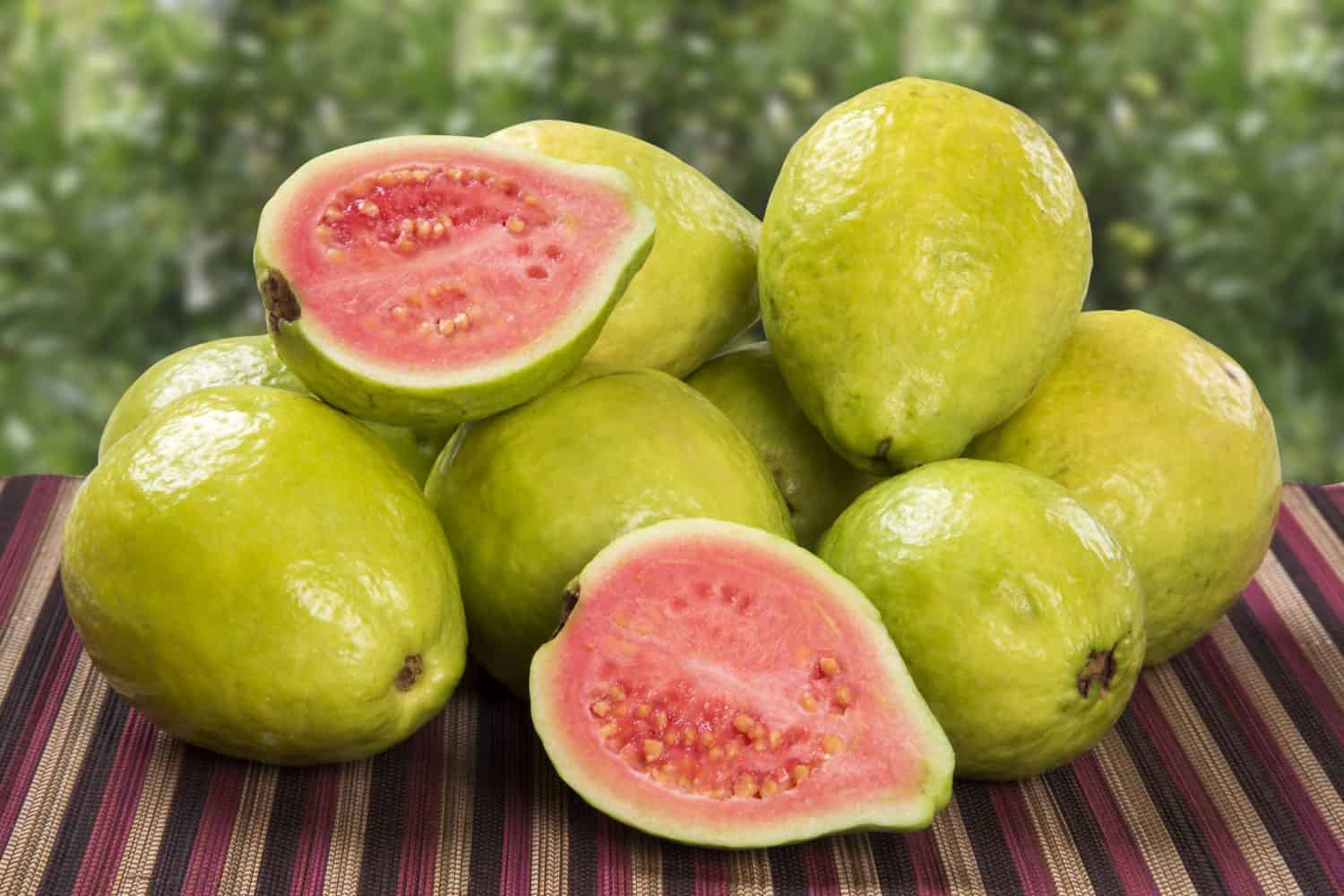These fruits are downright delicious! Whether you prefer something sweet, rich, or juicy, there is a tasty fruit on this list for you. Some are common in many households while others come from faraway places. Either way, you might just find your next culinary adventure when considering one of these fruits.
A fruit is edible and contains a seed. Many, but not all fruits, grow on a tree or bush. There are a few fruits that are treated like vegetables when it comes to cooking, such as tomatoes or cucumbers. But when it comes to scientific classification, they are fruits. These delicious fruits all start with G. Some are well-known and easy to find at your local grocery store. Others require a bit more hunting, at least in the United States, but are popular in other parts of the world. Many fruits need a tropical climate to thrive, making Central America, South America, Africa, and Southeast Asia rich in fruit varieties.
Common Fruits that Start with G
We’ll start with some of the fruits that you’re more likely to find in the grocery store, at least in North America. Not all of these fruits are native to the part of the world where they are sold. But even if adopted by a new culture, many of these fruits are a staple in cooking. They can even be a refreshing snack when eaten on their own.
Grapes: Did you know that grapes are actually a type of berry? They grow in clusters and come in a variety of colors. Green, red, and purple are the most common but there are specialty varieties out there as well. Grapes are delicious on their own but make a great addition to everything from salads to sides. Grapes can also be used to make things like jam, jelly, juice, and wine.
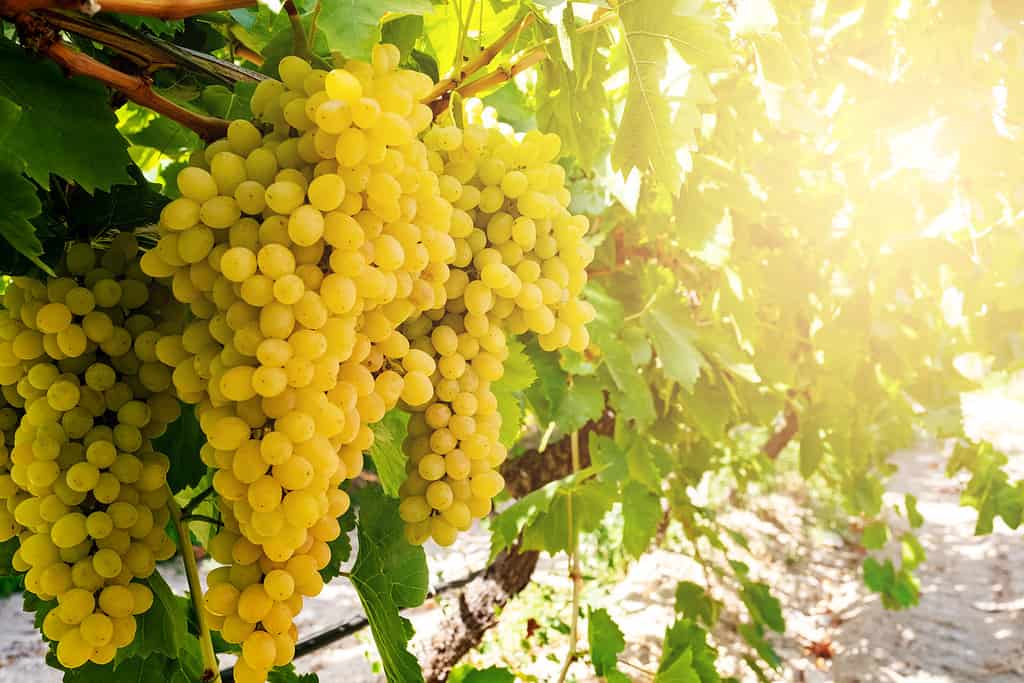
Yellow grapes are slightly rarer than white, green, and red grapes.
©erdemerdemli/ via Getty Images
Golden Raisins: These are just dried grapes but we’re giving them special recognition. Raisins in general often fill a very different role in dishes and meals. Golden raisins are made from white grapes, while regular raisins start as red or purple grapes. Raisins are a good snack, especially when you add them to cookies or oatmeal. You can also add them to savory dishes to bring a little sweet taste.
Gala Apples: These apples are a good option for people who like mildly sweet apples with just the right amount of crisp. It has a reddish-yellow mottled exterior and white flesh. They are on the smaller side and great for a snack. Gala apples make tasty applesauce as well.
Granny Smith Apples: These are the greenest of the green apples. It has a sour, tart taste and is very crisp. Granny Smith apples are some of the most popular apple varieties in the United States but they originated in Australia. They are great in pies, tarts, and similar desserts.
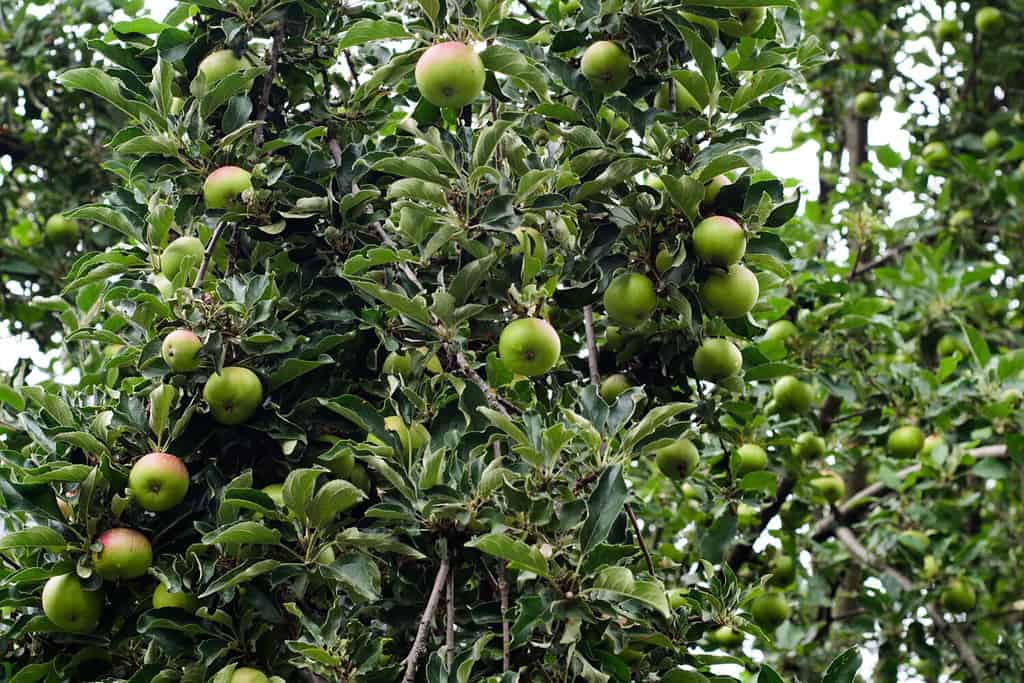
Granny Smiths have the most brilliant green skin of all apple varieties.
©AnastasiiaLee/Shutterstock.com
Grapefruit: These are citrus fruits that are a tart and a bit sour. The exterior is pinkish-orange. Segmented interior flesh makes them easy to eat in bite-sized chunks. They can be pale yellow to rich red, with the ruby red variety being one of the most popular and delicious.
Gooseberry: Gooseberries are native to many parts of Europe and Asia. Gooseberries make excellent jams, jellies, and pies all around the world. Gooseberries come in a variety of colors, similar to grapes. They can be green, red, purple, white, black, yellow, or orange.
Green Anjou Pear: This is a great pear that has all of the things you might want in a pear: firm flesh, mild flavor, delicate skin, and sweet taste. It can hold up to slicing, roasting, grilling, and baking. If you aren’t sure what variety of pear will work in a dish, chances are a green Anjou pear will be a good fit.

Like apples, pears grow on trees and are fun to pick yourself.
©JoannaTkaczuk/Shutterstock.com
Grand Nain Banana: What we all know as simply “bananas” are actually the variety known as grand nain bananas. Some places call it the Chiquita banana. The grand nain banana is the main variety from the commercial company Chiquita. They have a green skin that ripens to yellow as it matures, as well as yellow flesh.
Exotic Fruits that Start with G
These slightly more exotic varieties can be harder to find but add a lot of flavor to your plate. Depending on where you live, you might even be able to grow them yourself! Either way, they’re definitely worth the extra effort. Try one of these exotic fruits that start with G, either in your tropical garden or on your plate, if you get the chance.
Galia Melon: The galia melon has a similar look and taste to a honeydew, although a bit more yellow. These are sweet melons that are also very fragrant. The outside has a netted appearance, just like honeydew. These fruits originally developed as a hybrid between a cantaloupe and honeydew. They share a similar flavor profile and can be used interchangeably with other melons in cooking and preparing dishes.
Guava: A native to Central and South America, guavas are mildly sweet with a really pretty pink fleshy fruit and green exterior. They make great jams and jellies, although guavas are also a good addition to your plate for some visual interest. Even though they are an exotic fruit, you’ll likely be more successful finding guavas in a mainstream grocery store than some other options on the list.

Guava is a fast-growing evergreen shrub.
©iStock.com/Murilo Gualda
Governor’s Plum: This fruit goes by many names, including Governor’s plum, Indian plum, and ramontchi. It is native to Asia and Africa. It is sweet and slightly acidic, with white flesh and a dark reddish-purple skin. These aren’t readily available outside of their native growing environment but are worth the search if you can find them.
Goji Berries: Dried goji berries gained popularity as a superfood and are now easier to find than in the past. These berries have phytochemicals, vitamins, minerals, and fiber that all help with digestion and health. You can find dried goji berries in the health food section of mainstream grocery stores, although it can be harder to find them in other forms. If you just want the benefits, you might even look for goji berries as an addition to granola or other snack foods.
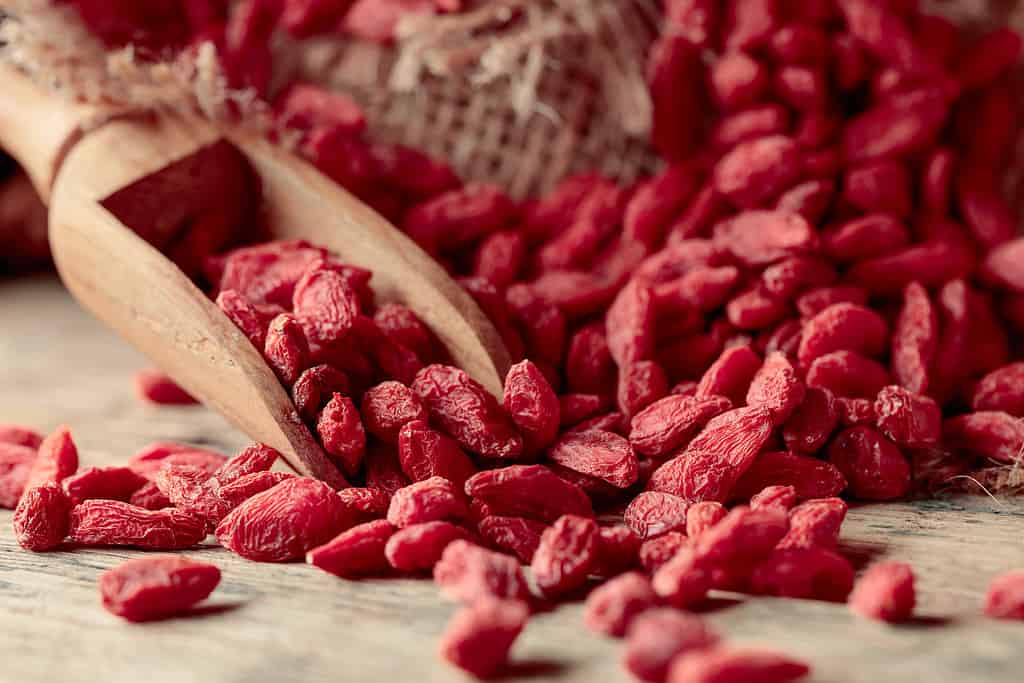
Dried goji berries became popular around the world when people realized how many nutrients they had.
©igorr1/iStock via Getty Images
Gac Fruit: This interesting fruit looks a bit like an avocado as it grows on the tree. But as it ripens, the skin turns from green to yellow to orange to red. That’s when it’s ripe and ready to eat! It is popular in Asian cooking, especially Vietnamese and Chinese dishes. In Vietnam, chefs cook gac fruit and serve it with sticky rice in a dish called xôi gấc to celebrate the new year.
Gamboge: These are very interesting-looking fruit that is native to southeast Asia. Over the years, gamboge fruit was also introduced to Florida, Australia, and other regions with similar climates. You might be more familiar with their other name, yellow mangosteen. They are quite sour and tart, which many people love.
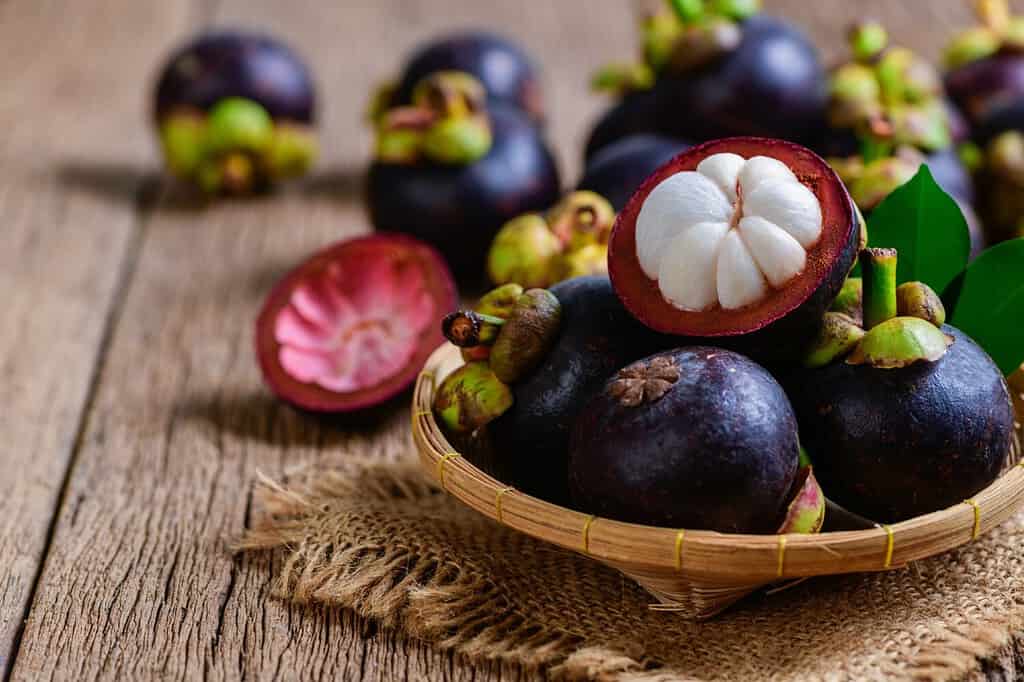
Mangosteens come in a variety of colors so pay close attention to what you are buying if you want a specific variety.
©kwanchai.c/Shutterstock.com
Genip: Also called Spanish lime, these green fruits have a sweet-tart taste. They are frequent in Central America, South America, and the Caribbean. It has a hard seed inside and orange flesh. The green skin is easy to peel. Both the flesh and the pit are edible. Generally, the pit tastes similar to cashews when roasted.
Thank you for reading! Have some feedback for us? Contact the AZ Animals editorial team.

